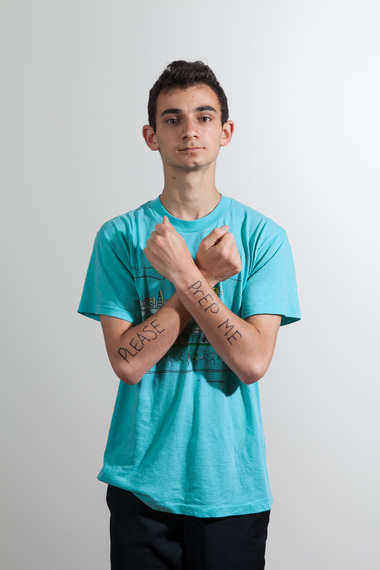Co-authored by: Yamini Oseguera-Bhatnagar, POWER Health Coordinator at HIVE; Caitlin Conyngham, Director of PrEP Programs at Philadelphia FIGHT; Alexander Harris, Student at University of the Arts; Malayjah Reason, Volunteer Corp Member at YHEP; Uri Belkind, MD, Clinical Director of the Health Outreach to Teens (HOTT) program at Callen-Lorde Community Health Center; Brian Ragas, Outreach & Linkage Coordinator at CRUSH Project, Oakland
Youth ages 13-24 account for a staggering 26% of new HIV infections in the United States with young men being the only demographic with an increase - up 22% from 2008 to 2010. Young people of color account for 80% of new HIV infections.
A new biomedical HIV prevention method known as pre-exposure prophylaxis or PrEP, was approved by the FDA in July 2012. This one pill, once a day method is safe and highly effective in preventing HIV acquisition. Normative recommendations and clinical guidelines support the implementation of PrEP for people at substantial risk of HIV infection. Along with post-exposure prophylaxis (PEP), condoms, sexually transmitted infection (STI) and HIV testing and treatment, and behavioral interventions, we can curb number of new HIV infections, if those at substantial risk of HIV know about and have access to these interventions.
The barriers to providing PrEP to youth are real. There are no clinical guidelines or published protocols for providing PrEP to youth under the age of 18, nor are minors included in the FDA approval. Confidentiality regarding medical services as well as accessing coverage (through a parent or guardian's insurance) can impede young people seeking sexual health services.
"PrEP is something revolutionary for everyone, but essential for gay and bisexual youth; so many [young people] are exposed to STIs and HIV simply due to lack of information about PrEP. 'A pill a day will keep HIV away', I like to tell my friends.
Being young and sexually active in cities like Atlanta or Philadelphia means traveling through a war you aren't aware of. With jaw dropping numbers, HIV has become a life obstacle; a silent opponent with longevity on it's side. PrEP isn't an intriguing idea...it's the responsible thing to do." -Alexander Harris
Leaders in the field of youth and PrEP gathered in discussion to illuminate the path forward and identify emerging best practices that might be rapidly scaled. The panel unanimously agreed that a culturally competent and youth-centered approach is essential.
PrEP4Youth Strategies for success:
1.Build on existing partnerships with youth-centered organizations. Partners can be found in reproductive and sexual health, homeless outreach, teen clinics and health education efforts. Knit these services together to provide outreach, social services and medical care. Successful LGBTQ health service models may be adapted to serve youth.
2.Provide youth-friendly wrap-around services. Beyond quality sexual health services, provide youth with friendly waiting areas, drop-in clinic hours, novel approaches to adherence support, food, and community building events. These services can help mitigate the substantial structural barriers many youth face.
3.Listen to youth. Make them visible in your program. Provide leadership opportunities. Community Advisory Boards, peer education and peer adherence support programs are some ways youth can become a part of your PrEP programming. Honor their role as gatekeepers in the community, assuring their voices are heard and their faces are visible.
Have policy and programming discussions about youth with youth present.
4.Marketing is key. Thoughtfully look at the messaging to youth within your clinic. Develop an attractive outreach plan. Consider your current clients one of the best sources of referral; value these relationships for feedback and networking.
5.Navigation services to help facilitate access to health care. In addition to understanding how to access public or private insurance coverage, the navigation process can provide health literacy so youth understand their rights in your state related to sexual wellness services. PrEP only works to prevent HIV if young people have the access to take it; including easily filling prescriptions at the pharmacy or with patient assistance programs.
6.Ensure that every door is an open door. Train youth-serving providers of all types in your community about PrEP. It is essential that every time youth show up for care, they are met with someone non-judgmental and supportive with proper referral processes in place.
7.Clinic policies demonstrate leadership. With the absence of standardized best practices or guidelines, including youth in your clinic policies shows leadership and a commitment to stemming rising HIV infections through quality HIV prevention services.
8.Advocate expanding State confidentiality laws. Minor consent laws and options to opt out of parental notification of insurance access are policy facilitators to assuring all youth have access to PrEP.
Providing sexual health services, including PrEP to youth is not only possible, but necessary. Embracing best practices, developing networks of care and advancing advocacy efforts can assure all youth have access to the HIV prevention methods that work for them. We can realize an HIV-free generation.
#PrEP4Youth #WheresMyPrEP

